38 how many calories are food labels based on
Food and Recipes Center: Easy, Healthy Recipe Ideas for Your ... May 16, 2022 · Food & Recipes Resource Center. Recipe Finder ; How to Read Food Labels ; Canola Oil ; Vegetarian Diet ; ... All of these ideas are low in calories and can be incorporated into your diet plan. Where 2000 Calories on Food Labels Comes From - Rachael Hartley Nutrition Calories on Food Labels Doesn't Much Matter Anyway . I hope knowing this history takes away some of the power behind the 2,000 calories on food labels. At the end of the day, if we didn't live in a world that tries to convince you weight gain is the worst thing that could possibly happen, seeing calories on a food label wouldn't have any ...
Food Labels 101 - Penn Medicine Nutrition labels are based on a daily 2,000 calorie diet. Depending on your age, gender and activity level, you may need to consume more or less than 2,000 calories per day, so keep this in mind when viewing each label. Now let's take a look at the parts of the nutrition facts label and break it all down. Anatomy of a Nutrition Facts Label
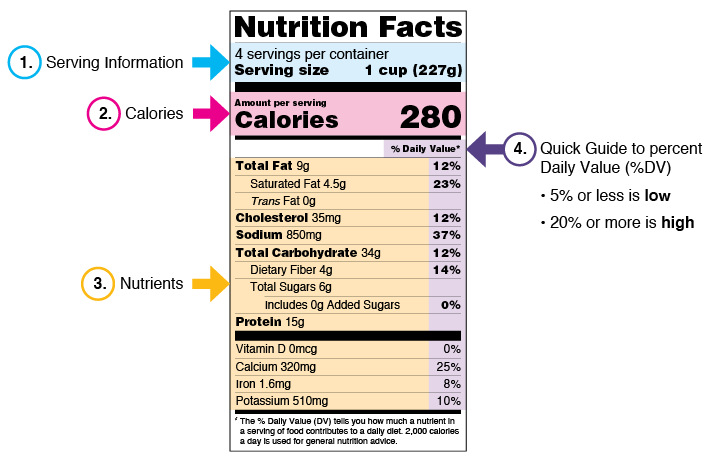
How many calories are food labels based on
Are Calorie Counts on Food Labels Accurate? • Cathe Friedrich A calorie is the amount of energy needed to raise the temperature of one gram of water by 1 degree Centigrade, although the calorie count you see on food packages is usually expressed in kilocalories, equivalent to 1,000 calories. These days, calorie counts are measured using another technique called the Atwater system. How to Understand and Use the Nutrition Facts Label | FDA - U.S. Food ... That is two times the calories and nutrients shown in the sample label, so you would need to double the nutrient and calorie amounts, as well as the %DVs, to see what you are getting in two... Why most food labels are wrong about calories Food labels say how many calories a food contains. But what they don't say is that how many calories you actually get out of your food depends on how highly processed it is. Raw versus...
How many calories are food labels based on. Reading Food Labels (for Parents) - Nemours KidsHealth The information on food labels is based on an average diet of 2,000 calories per day. But the actual number of calories and nutrients that kids need will vary according to their age, weight, gender, and level of physical activity. (For more guidance, check out the USDA's MyPlate .) Total Fat Understanding Food Labels - Nutrition: Science and Everyday Application ... The FDA uses the following definitions for interpreting the %DV on food labels:4. 5%DV or less means the food is low in a nutrient. 10% to 19%DV means the food is a "good source" of a nutrient. 20%DV or greater means the food is high in a nutrient. How Accurate Are Calorie Counts for Almonds, KIND Bars, and More? Their decision was based on recent research that scrutinized how calories are calculated on food items. Experts say calorie labels are only supposed to be a guide, not an exact measurement. How to Read Food Labels Without Being Tricked - Healthline Nutrition labels state how many calories and nutrients are in a standard amount of the product — often a suggested single serving. However, these serving sizes are frequently much smaller than...
Changes to the Nutrition Facts Label | FDA - U.S. Food and ... Mar 07, 2022 · Manufacturers with $10 million or more in annual sales were required to update their labels by January 1, 2020; manufacturers with less than $10 million in annual food sales were required to ... Food Labeling 101: Understanding the Nutrition Facts Label The food label on packaged food has been there since the early 1990's. With all the label confusion, the FDA finally decided it was time the nutrition label got a makeover (we couldn't agree ... 3 Ways to Calculate Food Calories - wikiHow Oct 28, 2022 · To calculate food calories, start by looking at how much protein, carbohydrates, and fat the food has. Then, multiply the total number of grams of protein by 4, since 1 gram of protein is equal to 4 calories. Understanding Food Labels - The Nutrition Source One might assume the small bag to contain 1 serving, but it actually contains 3 servings so that eating the whole bag provides 300 calories. With the updated label, the same size bag would show 1 serving at 300 calories. Keep in mind that the serving size is not a recommendation for everyone about how much to eat, but rather a reference point.
How To Read Food and Beverage Labels - National Institute on Aging The percent Daily Value (% DV) tells how much a nutrient in a serving of the food or beverage contributes to a total daily 2,000-calorie diet. Although the average person needs 2,000 calories a day to maintain their weight, individuals may need more or fewer depending on their lifestyle. Calories for Hundreds of Foods: Your Calorie Chart Database One hundred calories of peanut butter, for example, is only a spoonful or two. But one hundred calories of vegetables can equal several cups! Calories are a unit of measurement to show how much energy you will get from a serving of food. Therefore, to lose weight, it's best to limit any calorie-dense foods - anything where you get a lot for ... Calories, Nutrition Facts, and Food Labels - Quizizz A nutrition facts label is based off of a _____ calorie diet. answer choices . 2000. 2500. 3000. 1500 2000 alternatives 2500 ... Q. Reading the food label can help you compare products, make healthier choices and provide valuable information to people with food allergies. answer choices Are the Calorie Counts on Food Labels Accurate? Today, nearly every packaged food you can find includes a calorie count on the label. These numbers describe how much energy your body gets from a particular bar of candy or box of cereal. And while the effectiveness of counting calories has been debated, for many, it's a helpful weight loss tool. But can you really count on calorie labels?
Counting Calories? You Might Not Want to Trust Food Labels - Culture Published January 1, 2015 • 5 min read If your dieting self has ever tried to piece together one whole chip from several fragments to determine what a food label's "about six chips" looks like...
How To Count Calories Without Labels (4 Ways) - FeastGood.com For example 200 grams of salmon that you have weighed on your scale comes out to about 416 calories, according to Google. If you had eyeballed this portion at 120 grams (about 250 calories), you would be underestimating by 166 calories.
The Science Behind Calories and Nutrition Facts Labels The calorie number we see on food labels refers to a kilocalorie (kcal), which is also known as a large calorie or a food calorie. A kilocalorie is 1 000 calories. One kilocalorie is the amount of energy it takes to heat one kilogram of water one degree Celsius at sea level.
Fat and Calories: The Difference & Recommended Intake How many grams of fat should I eat each day (based on 35% calories from fat)? If you eat this many calories daily: 1,200; Eat no more than this many fat grams daily: 47; If you eat this many calories daily: 1,500; Eat no more than this many fat grams daily: 58; If you eat this many calories daily: 1,800; Eat no more than this many fat grams ...
Vitamin B12 - Consumer - National Institutes of Health Many older adults don’t have enough hydrochloric acid in their stomach to absorb the vitamin B12 that’s naturally present in food. People over 50 should get most of their vitamin B12 from fortified foods or dietary supplements because, in most cases, their bodies can absorb vitamin B12 from these sources.
Understanding Food Nutrition Labels | American Heart Association Remember that the information shown in the label is based on a diet of 2,000 calories a day. You may need less or more than 2,000 calories depending upon your age, gender, activity level, and whether you're trying to lose, gain or maintain your weight.
Food Labels | Nutrition.gov What's New with the Nutrition Facts Label. HHS, Food and Drug Administration. The U.S. Food and Drug Administration (FDA) has updated the Nutrition Facts label on packaged foods and beverages with a fresh design that will make it easier for you to make informed food choices that contribute to lifelong healthy eating habits. What's in a Name?
Calorie Counter and Food Nutrition Data - Verywell Fit May 24, 2022 · Macronutrients are the nutritive components found in food—fat, protein, and carbohydrate—needed in larger amounts for energy and to maintain the body’s structure and systems. The nutrition facts panel lists the percentage of each of these macronutrients in a serving based on a 2000-calorie diet.
How Do They Calculate Calories on Food Labels? His 4-9-4 method came up with an average of 4 calories per gram of protein, 9 calories per gram of fat, and 4 calories per gram of carbohydrate that is still in use today. For example, using the Atwater method, a box of crackers that contains per serving... 5 grams of fat (5 x 9 = 45 calories) 22 grams of carbohydrate (22 x 4 = 88 calories)
Food labels - NHS These labels provide information on the number of grams of fat, saturated fat, sugars and salt, and the amount of energy (in kJ and kcal) in a serving or portion of the food. But be aware that the manufacturer's idea of a portion may be different from yours. Some front-of-pack nutrition labels also provide information about reference intakes.
Food Labels | CDC - Centers for Disease Control and Prevention If you eat the whole thing, you are eating 8 times the amount of calories, carbs, fat, etc., shown on the label. Total Carbohydrate shows you types of carbs in the food, including sugar and fiber. Choose foods with more fiber, vitamins, and minerals. Choose foods with lower calories, saturated fat, sodium, and added sugars. Avoid trans fat.
Food Labels: Carbohydrates | Home & Garden Information Center That means carbohydrates should supply 900 calories or more in a 2,000-calorie-a-day diet. Facts on Food Labels. Food labels contain clues to a food's carbohydrate content, including the amount per serving. ... for total carbohydrate is 300 grams (g) or 100% DV, based on a 2,000-calorie diet. This number combines several types of ...
Food Labels (for Teens) - Nemours KidsHealth A food with 10%-19% of a nutrient is a good source of that nutrient. A food with 20% or more of a nutrient is high in that nutrient. The information on food labels is based on an average adult diet of 2,000 calories per day. The actual number of calories and nutrients that kids need will depend on their age, weight, gender, and level of ...
How accurate are nutrition labels? The number of calories in a food is listed on the label. What they don't explain is that the number of calories you get from your food is determined by how processed it is. Cooking, blending, mashing, and utilizing refined flour instead of unprocessed flour are all examples of food processing. What is the 5 20 rule
Calories on the New Nutrition Facts Label | FDA - U.S. Food and Drug ... One package of food may contain more than one serving, so, if you eat two servings you would be getting two times the calories shown on the label. For example, if you ate one serving of the...
Why food labels are wrong about calories | Human World | EarthSky Labels provide a number that likely overestimates the calories available in unprocessed foods. Food labels ignore the costs of the digestive process - losses to bacteria and energy spent...
How Many Calories Should You Eat? Weight Loss Calculator Dec 03, 2021 · Calorie needs for women can depend on their age, size, and activity level. Most women between the ages of 19–30 require 2,000–2,400 calories per day to maintain their weight.
Why most food labels are wrong about calories Food labels say how many calories a food contains. But what they don't say is that how many calories you actually get out of your food depends on how highly processed it is. Raw versus...
How to Understand and Use the Nutrition Facts Label | FDA - U.S. Food ... That is two times the calories and nutrients shown in the sample label, so you would need to double the nutrient and calorie amounts, as well as the %DVs, to see what you are getting in two...
Are Calorie Counts on Food Labels Accurate? • Cathe Friedrich A calorie is the amount of energy needed to raise the temperature of one gram of water by 1 degree Centigrade, although the calorie count you see on food packages is usually expressed in kilocalories, equivalent to 1,000 calories. These days, calorie counts are measured using another technique called the Atwater system.

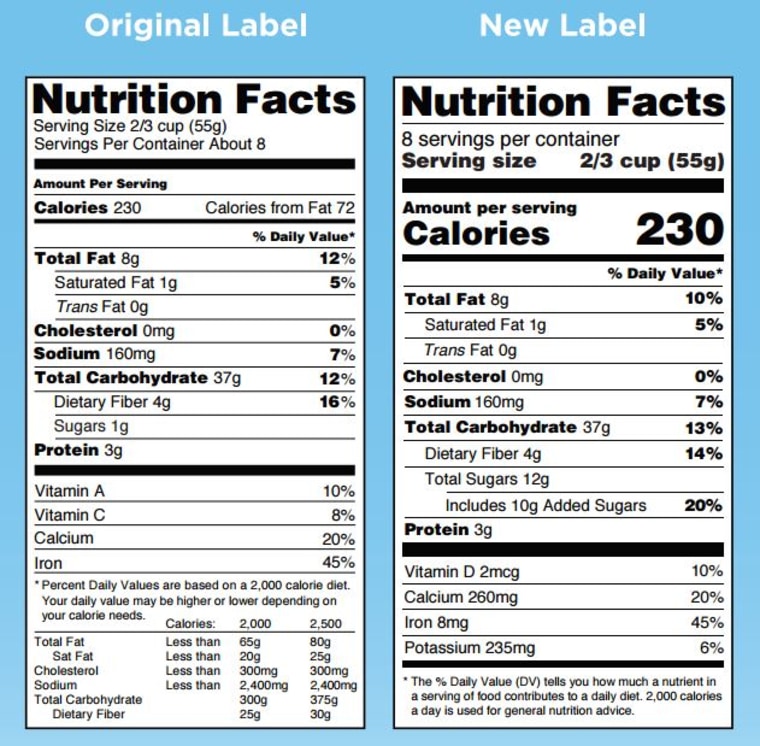
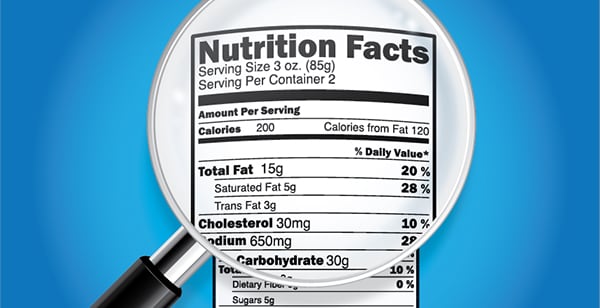
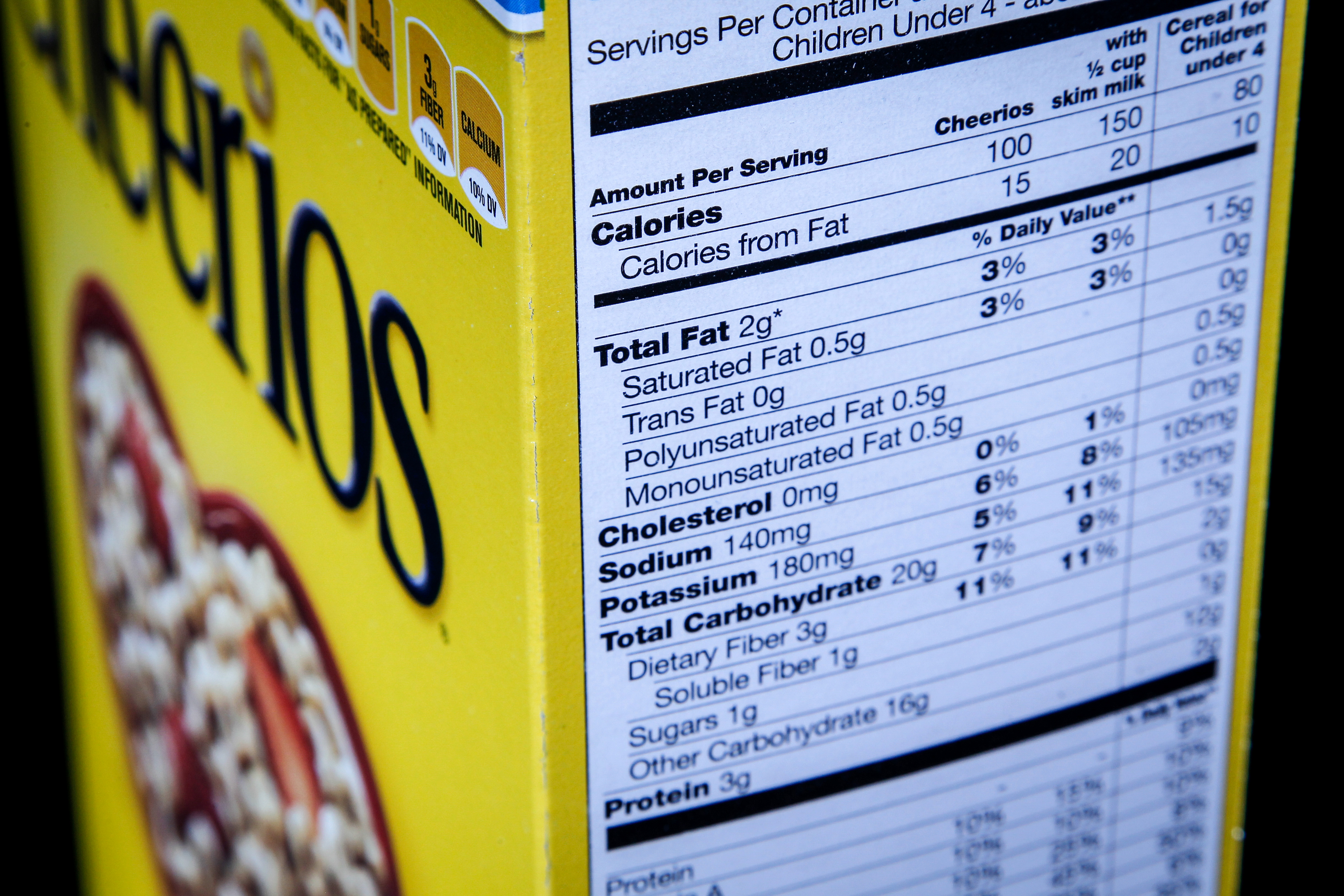
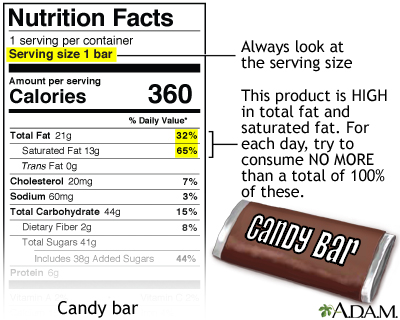


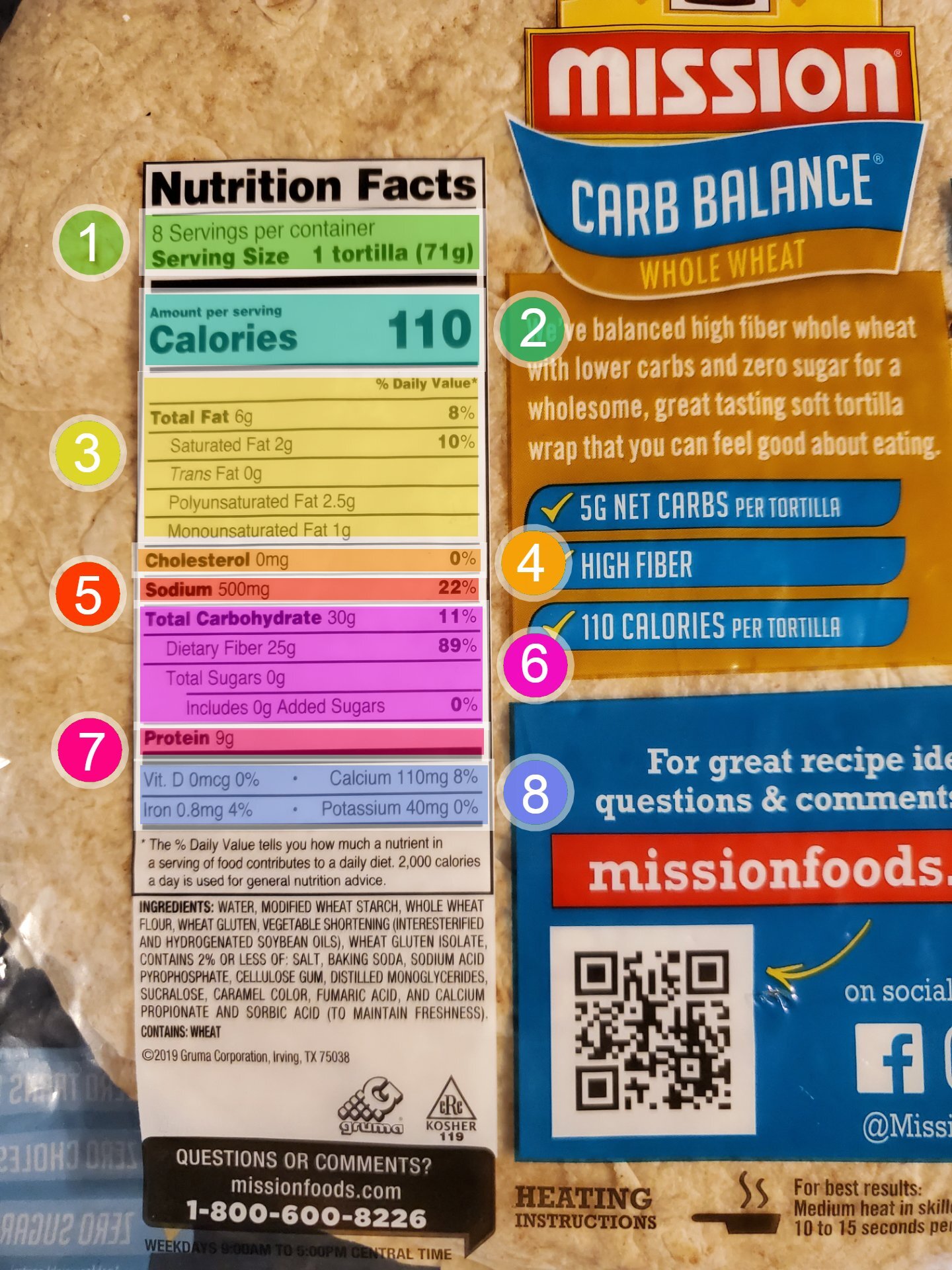



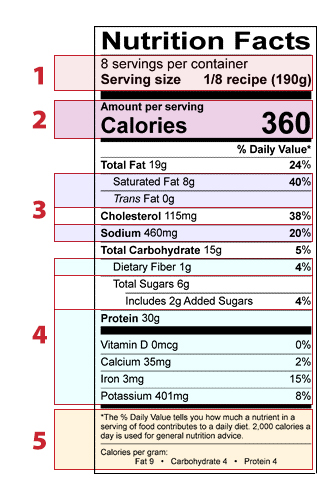
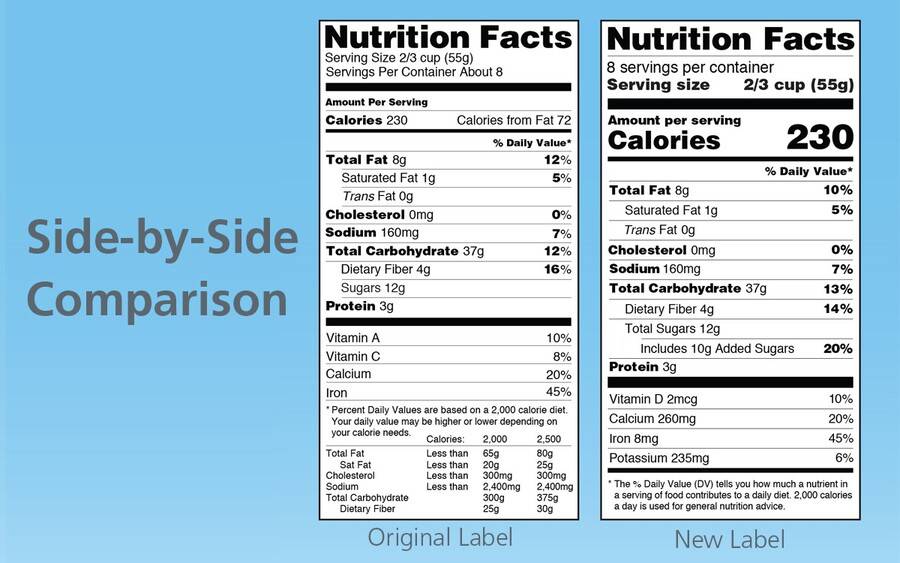
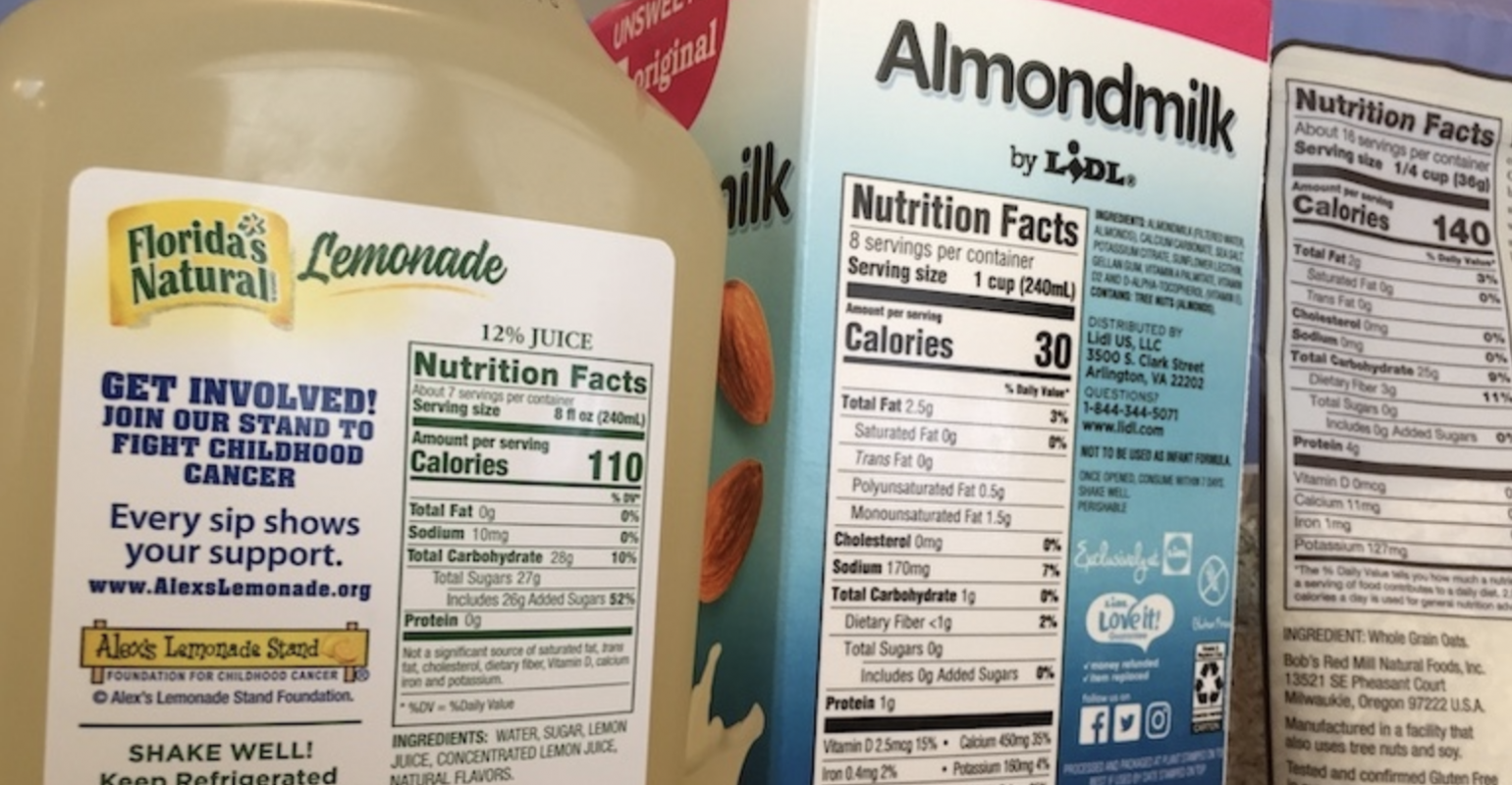

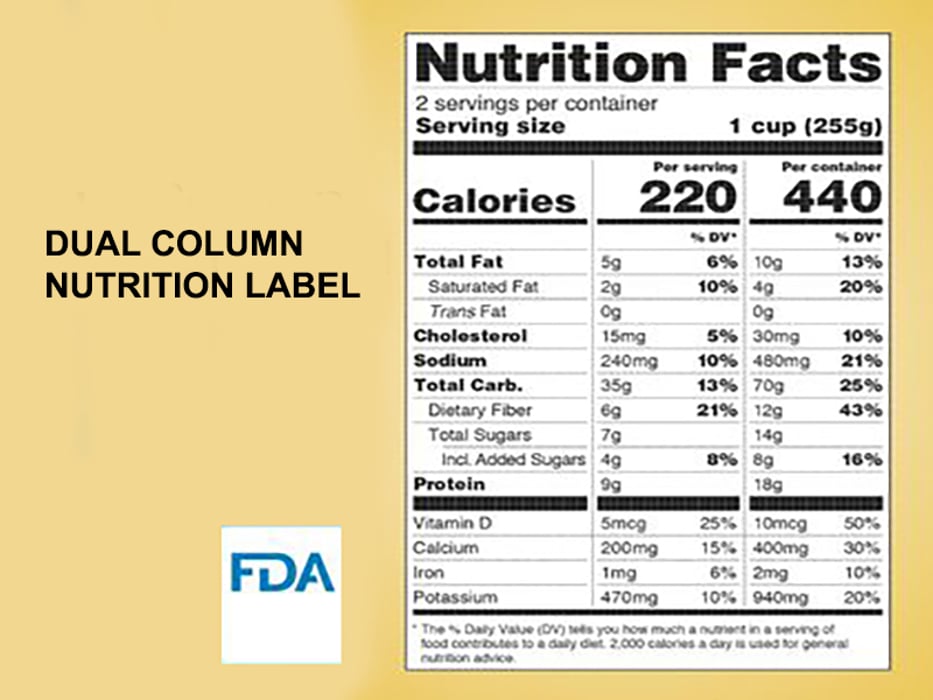
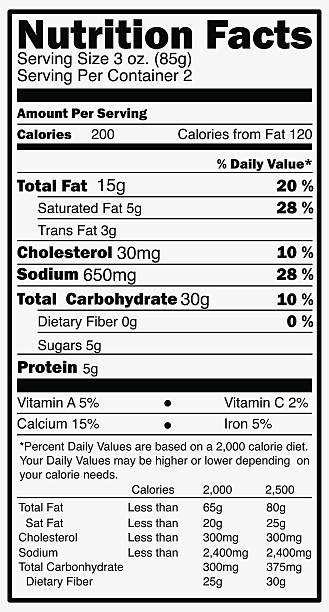
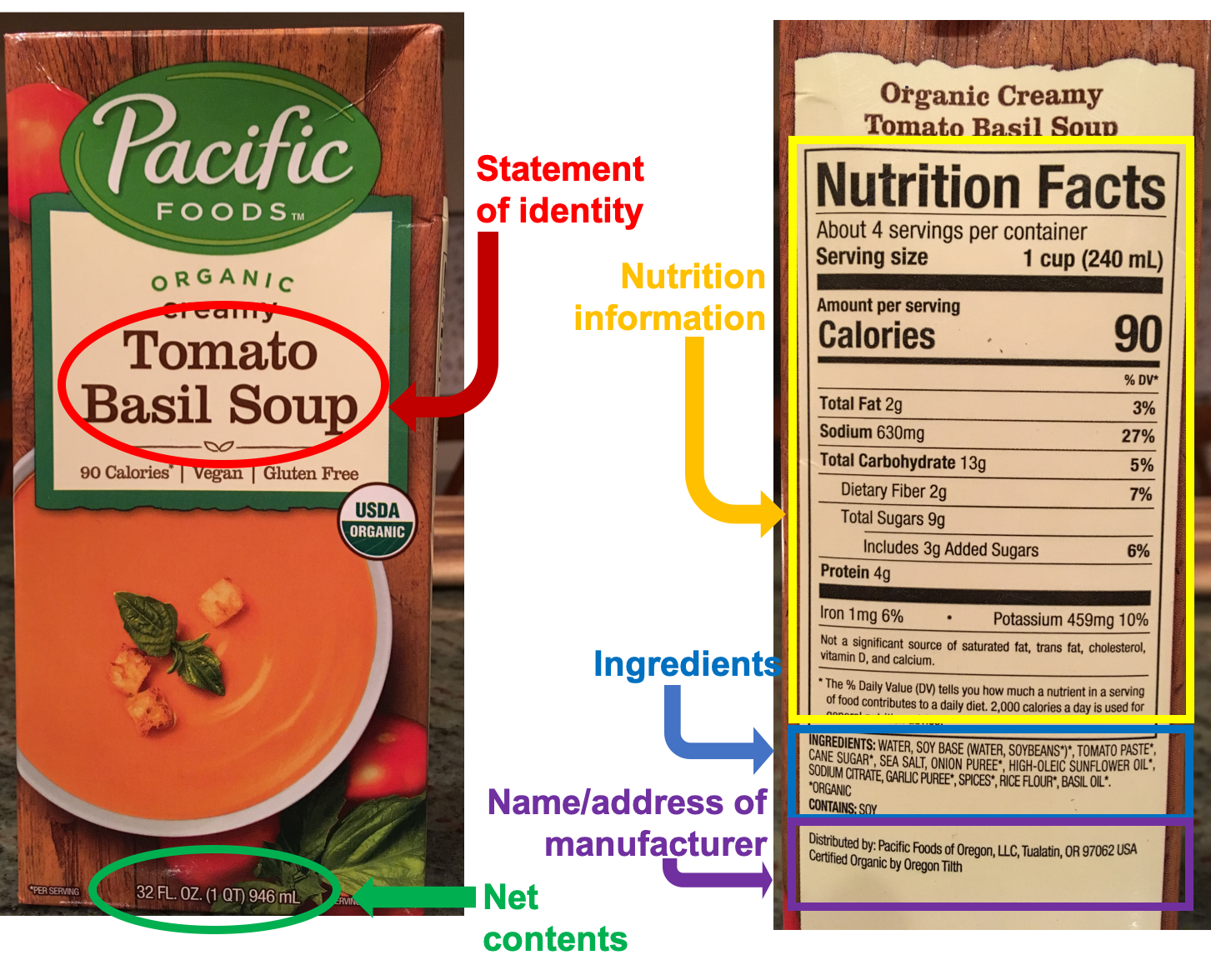

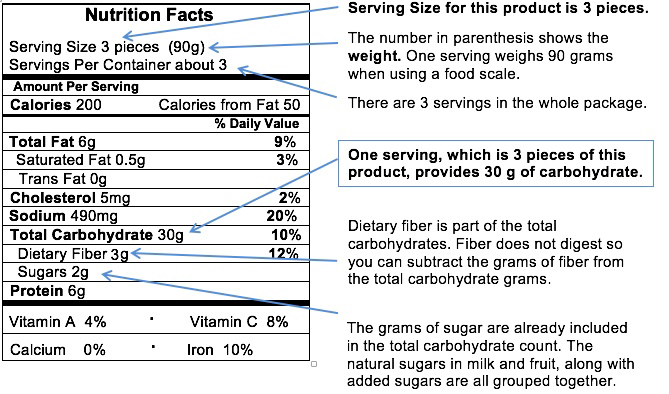






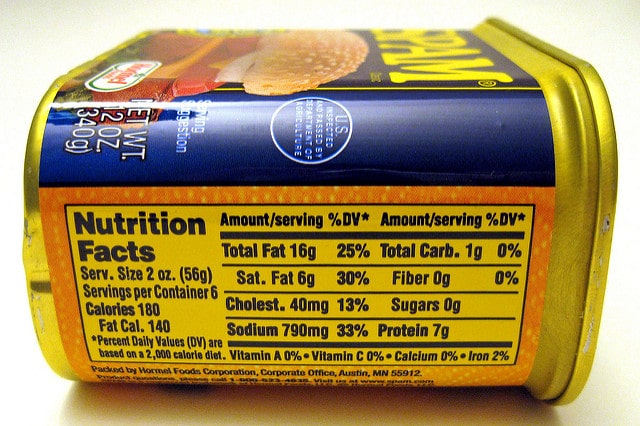
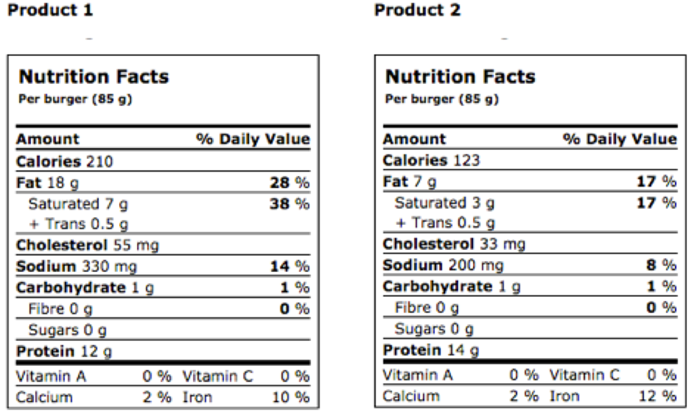
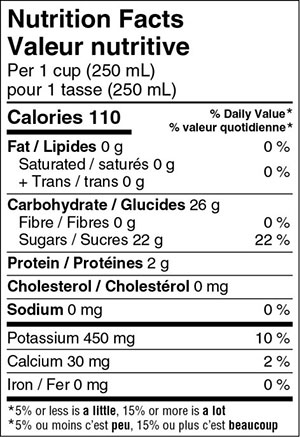
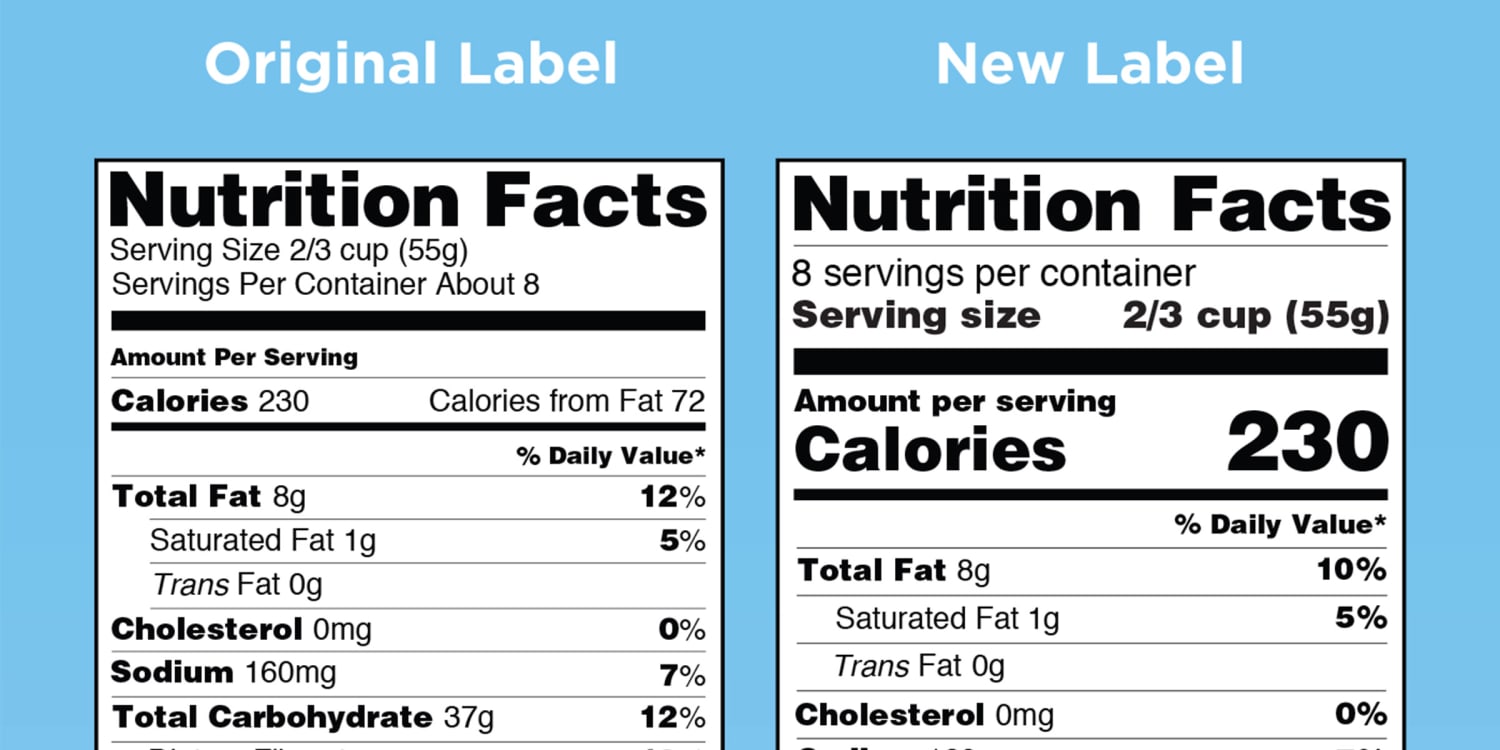

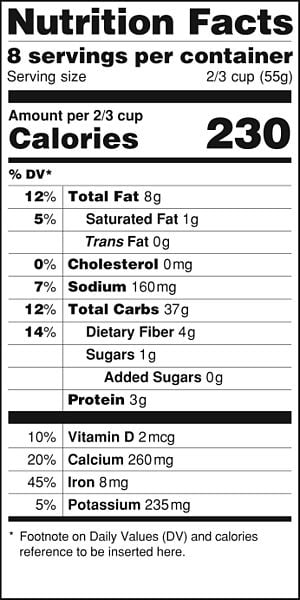


Post a Comment for "38 how many calories are food labels based on"